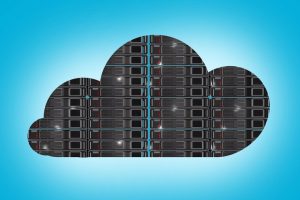Choose the Right VPS Configuration for Your Needs
How to Choose the Best VPS Configuration for Your Needs
Stepping up from shared hosting often leads to the consideration of a Virtual Private Server (VPS). But with a wide range of configurations available – differing in CPU, RAM, storage, and bandwidth – making the right choice can feel daunting. This guide breaks down the key elements of VPS configurations, providing you with the knowledge to select the perfect fit for your website or application’s unique demands.
Understanding VPS Basics: What Are You Actually Paying For?
Before diving into specific configurations, it’s crucial to understand what a VPS actually *is*. Unlike shared hosting, where your website shares resources with countless others, a VPS uses virtualization technology to create dedicated portions of a physical server for individual users. This translates to more resources, greater control, and improved performance. However, “dedicated” in this context doesn’t mean you’re getting an entire physical machine – you’re getting a slice of one. The effectiveness of that slice depends heavily on its configuration.
Let’s break down the core components you’ll encounter when choosing a VPS:
- CPU (Central Processing Unit): The ‘brain’ of the server, responsible for executing instructions. Measured in cores and clock speed (GHz). More cores allow for better handling of multiple tasks simultaneously, while higher clock speeds mean faster processing. Consider the type of CPU too; Intel Xeon processors are commonly used in VPS environments, often offering a good balance of performance and cost. AMD EPYC processors are becoming increasingly popular, particularly for workloads requiring significant core counts and memory bandwidth.
- RAM (Random Access Memory): Temporary storage for data the CPU is actively using. The more RAM you have, the more data your server can handle at once, resulting in faster loading times and smoother performance, particularly for resource-intensive applications. Insufficient RAM leads to ‘swapping’, where the server uses slower disk storage as temporary RAM—a major performance bottleneck.
- Storage: SSD vs. HDD: VPS storage usually comes in two forms: Solid State Drives (SSDs) and Hard Disk Drives (HDDs). SSDs are *significantly* faster, offering quicker boot times, faster file access, and improved overall responsiveness. HDDs are cheaper per gigabyte, but their slow read/write speeds make them unsuitable for most modern web applications. NVMe SSDs represent the latest in storage technology, offering even faster speeds than traditional SATA SSDs. Always prioritize SSD storage.
- Bandwidth: The amount of data transferred between your server and the internet. This includes data sent to visitors when they access your website and data received from visitors (e.g., form submissions, uploads). Bandwidth is typically measured in gigabytes (GB) per month. Consider not only the amount of traffic your website receives but also the size of the files visitors will download.
- Operating System (OS): The foundation of your VPS. Common choices include Linux distributions like Ubuntu, Debian, CentOS, and Windows Server. Linux is generally preferred for web hosting due to its stability, security, and cost-effectiveness. The choice depends on your technical expertise and the requirements of your applications; Some apps specifically require a Windows Server environment.
- Networking: Consider the network speed of the VPS provider. Look for providers offering Gigabit connections for optimal performance. Also, check if they have a Content Delivery Network (CDN) integration to improve performance for geographically dispersed users.
The interplay between these components is critical. A powerful CPU paired with insufficient RAM will be bottlenecked. Similarly, lightning-fast SSD storage won’t matter much if your bandwidth is limited. Therefore, understanding your application’s resource demands is the first step to selecting the right configuration.
Assessing Your Application’s Resource Needs
The most common mistake when choosing a VPS is overestimating or, more frequently, underestimating resource needs. Start by honestly evaluating what your website or application *actually* does. Here’s a breakdown of common scenarios and their typical resource requirements:
- Static Website (HTML, CSS, JavaScript): These websites have minimal server-side processing requirements. A basic VPS configuration with 1-2 vCPU cores, 1-2 GB of RAM, and 20-50 GB of SSD storage is usually sufficient. Bandwidth needs will depend on traffic volume.
- WordPress Website (Low Traffic): WordPress, even without many plugins, requires more resources than a static website due to its dynamic nature and database queries. Consider 2-4 vCPU cores, 2-4 GB of RAM, and 40-80 GB of SSD storage. Caching plugins are crucial to reduce server load.
- WordPress Website (High Traffic): High-traffic WordPress sites demand significantly more power. 4+ vCPU cores, 4-8+ GB of RAM, and 80-200+ GB of SSD storage are often necessary. Optimized database configurations, a robust caching system, and potentially a CDN are essential.
- E-commerce Website (Magento, Shopify, WooCommerce): E-commerce platforms are resource hogs, especially during peak shopping times. A minimum of 4 vCPU cores, 8+ GB of RAM, and 100+ GB of SSD storage are recommended. Consider database optimization, caching, and CDN integration.
- Web Application (Node.js, Python/Django, Ruby on Rails): Resource requirements vary enormously depending on the application’s complexity and user base. Thorough testing and scaling are crucial. Start with 2-4 vCPU cores, 4-8 GB of RAM, and 50-100 GB of SSD storage, and monitor resource usage carefully.
- Game Server (Minecraft, Counter-Strike): Game servers are extremely demanding, requiring significant CPU power, RAM, and low latency network connections. Configurations will vary drastically based on the game and number of players. Expect to need 4+ vCPU cores, 8+ GB of RAM, and 100+ GB of SSD storage.
Don’t forget to factor in future growth. If you anticipate significant traffic increases or feature additions, choose a configuration that provides headroom for expansion. Scalability is also important – can you easily upgrade your resources as needed?
Profiling Tools: Utilize server monitoring tools (like New Relic, Datadog, or even basic tools like `top` or `htop` on Linux) to track resource usage on your existing server (if you have one) to identify bottlenecks. These tools can reveal precise CPU usage, memory consumption, disk I/O, and network traffic patterns, aiding in accurate VPS configuration predictions.
Decoding VPS Plans: Managed vs. Unmanaged & Beyond
Beyond the core specifications, VPS providers offer varying levels of service. The primary distinction is between *managed* and *unmanaged* VPS:
- Unmanaged VPS: You are responsible for all aspects of server administration, including OS installation, security updates, software configuration, and troubleshooting. This option requires strong technical skills but offers maximum control and flexibility. Typically, these are the cheapest options.
- Managed VPS: The provider handles OS updates, security patching, server monitoring, and often offers support for common software installations. This frees you from server administration tasks, allowing you to focus on your website or application. Managed VPS plans are more expensive, but worth the cost for those lacking technical expertise.
There are also hybrid options – semi-managed VPS – which provide some level of support, but still require you to handle certain administrative tasks. Carefully consider your technical skillset and available time when choosing a management level.
Additional Considerations in VPS Plans:
- Control Panel: Many providers offer control panels like cPanel/WHM or Plesk, simplifying server management. These panels come with an additional cost but can be invaluable for non-technical users.
- Backups: Ensure the provider offers regular automated backups. Data loss can be catastrophic, so reliable backups are essential. Verify the backup retention policy and restoration process.
- Support: Evaluate the provider’s support options (e.g., 24/7 live chat, email, phone). Responsive and knowledgeable support can save you significant time and frustration.
- Server Location: Choose a server location geographically close to your target audience. This minimizes latency and improves website loading times.
- Scalability Options: Does the provider allow easy upgrades or downgrades? The ability to scale resources on demand is vital for handling traffic spikes and evolving needs.
- Root Access: For unmanaged VPS, ensure you have full root access, allowing you to install and configure any software you need.
The Importance of Scalability & Future-Proofing
Your initial VPS configuration shouldn’t be viewed as a static decision. Websites and applications evolve, and resource requirements change over time. The ability to scale your VPS resources is paramount.
Vertical Scaling vs. Horizontal Scaling:
- Vertical Scaling (Scaling Up): Increasing the resources of a single VPS (e.g., adding more CPU cores, RAM, or storage). This is the simplest approach but has limitations. There’s a maximum capacity that a single server can handle.
- Horizontal Scaling (Scaling Out): Adding more VPS instances to distribute the load. This provides greater scalability and redundancy but is more complex to implement, often requiring load balancing and application architecture changes.
When selecting a provider, inquire about their scalability options. Can you easily upgrade your plan or add additional VPS instances? What is the process for migrating to a larger configuration? Look for providers that offer pay-as-you-go pricing models and automated scaling features.
Load Testing: Before launching a new application or making significant changes to your existing one, perform load testing to simulate real-world traffic and identify potential bottlenecks. Tools like JMeter or LoadView can help you assess your server’s capacity and optimize your configuration accordingly.
Monitoring and Alerting: Set up server monitoring to track key metrics like CPU usage, memory consumption, disk I/O, and network traffic. Configure alerts to notify you when resource thresholds are exceeded, allowing you to proactively address potential performance issues.
Ultimately, selecting the right VPS configuration is an ongoing process. Regularly monitor your server’s performance, analyze resource usage, and adjust your configuration as needed to ensure optimal performance and scalability.
In essence, finding the correct VPS setup isn’t simply about picking the biggest numbers; it’s about striking a balance between current demands, anticipated growth, and your technical capabilities. Evaluate your application’s needs, understand the different components of a VPS, explore management options, and prioritize scalability. By carefully considering these factors, you’ll be well-equipped to choose a VPS configuration that empowers your online success and avoids costly underperformance or unnecessary expenditure.












